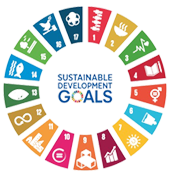Rajaram Yadav, Kalosona Paul, Shrestha Saha
It is well known that child nutrition is affected by many factors like socio-cultural, economic and demographic, etc. Studies found that maternal education, wealth index, and ethnicity have an influence on child nutrition. In this paper, comparative study of malnutrition among children and mothers between 1992-93 and 2005-06 has been done.
Objective: The main objective of the paper is to study how progress in demographic and other socioeconomic factors influence nutritional status of mother and children.
Data and Methods: First round (1992-93) and third round (2005-06) of National Family Health Survey has been used to reach the objective of the study. To show the progress in nutritional status, percentage change in prevalence of malnutrition in different background characteristics from 1992-93 to 2005-06 has been calculated. To show the progress in different background characteristics and its effect on child malnutrition decomposition analysis has been done.
Result: Almost all variable are significantly associated with child malnutrition thus more contribution of any variable in bringing the change in prevalence of malnutrition shows the more progress in that variable from 1992-93 to 2005- 06. The decomposition analysis clearly shows that the condition of mother’s education and timing to initiate breastfeeding are found to be contributing significantly to the reduction of underweight among children between 1992- 93 and 2005-06.
Conclusion: This study shows that improvement in mother’s education contributed the most in improving the nutritional status of children. Thus by increasing the educational in female under-nutrition can be reduced to a larger extent.
[1] Gillespie, S., & McNeill, G. (1992). Food, health and survival in India and developing countries. Oxford University Press.
[2] Griffiths, P., Matthews, Z., & Hinde, A. (2002). Gender, family, and the nutritional status of children in three culturally contrasting states of India. Social science & medicine, 55(5), 775–790.
[3] International Institute For Population Sciences (IIPS) and Macro International (2007) National Family Health Survey (1993), 1992-93 India Vol. 1 Mumbai IIPS.
[4] International Institute For Population Sciences (IIPS) and Macro International (1994) National Family Health Survey (2006), 2005-06 India Vol. 1 Mumbai IIPS.
[5] Jelliffe, D. B., & Jelliffe, E. P. (1978). Human milk in the modern world. British medical journal, 2 (6151), 1573.
[6] Kumar, D., Goel, N. K., Kalia, M., & Mahajan, V. (2015). Socio-demographic Factors Affecting the Nutritional Status of the Under Three Children in Chandigarh, UT. Healthline, Journal of Indian Association of Preventive and Social Medicine, 6(1), 46–52.
[7] Mendelson, S., & Chaudhuri, S. (2009). Child malnutrition in India: Why does it persist. Visto el, 20.
[8] Mishra, V. K., Lahiri, S., & Luther, N. Y. (1999). Child nutrition in India.
[9] Mishra, V. K., & Retherford, R. D. (2000). Women’s education can improve child nutrition in India.
[10] Mosley, W. H., & Chen, L. C. (1984). An analytical framework for the study of child survival in developing countries. Population and development review , 25–45.
[11] Pelletier, D. L. (1994). The relationship between child anthropometry and mortality in developing countries: implications for policy, programs and future research. Journal of nutrition ,124(10), 2047S.
[12] Rao, S. (2001). Nutritio nal status of the Indian population. Journal of biosciences , 26(4), 481-489.
[13] Ruzicka, L. T., & Kane, P. (1985). Nutrition and child survival in South Asia.
[14] Van de Poel, E., Hosseinpoor, A. R., Speybroeck, N., Van Ourti, T., & Vega, J. (2008). Socioeconomic inequality in malnutrition in developing countries. Bulletin of the World Health Organization, 86(4), 282-291.
[15] Viswanathan, B., & Meenakshi, J. V. (2006). The changing pattern of undernutrition in India: A comparative analysis across regions (No. 2006/118). Research Paper, UNU-WIDER, United Nations University (UNU).


